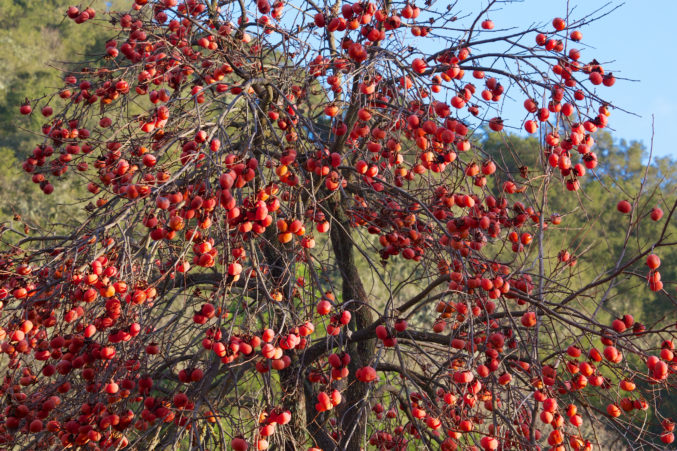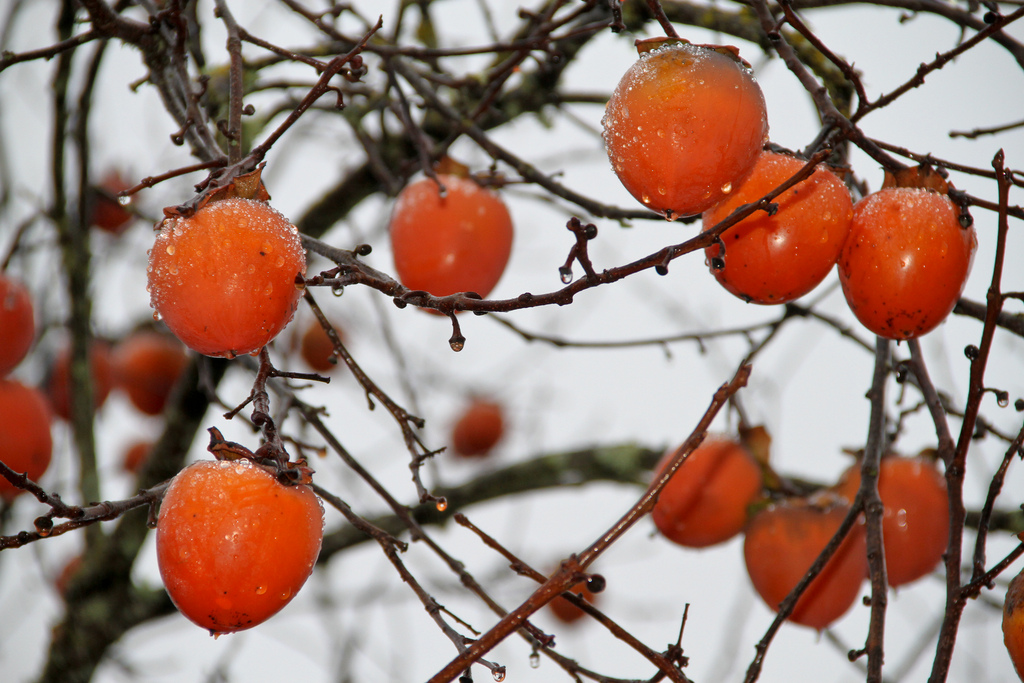You’ve seen them at Whole Foods. If you shop at H-Mart, you’ve seen them there, whole cases that have cropped up among the lychees and Asian pears. You’ve seen them and wondered.
This time of year I always get questions about what I think is one of the most beautiful and misunderstood of fruits. Because I lived in California, winter for me was marked by the bright orange orbs that hang like ornaments in the branches of denuded trees. They grow well in the San Fernando Valley, where winter nights are chilly, and I await their arrival like some people await the first Texas grapefruits.

But chances are, if you aren’t from California, Korea, China, or Japan, or have a Midwestern aunt who makes persimmon pudding, they’re a bit of a mystery to you. And if you’ve eaten the wrong kind at the wrong time, they’ve left you with an abhorrence for this atrocity that created a terrible, bitter, cotton-mouth feeling in your mouth. (That’s from the astringency of tannins, the same thing that makes you pucker in wine.) Don’t avoid them; just figure out the difference between the types.
Fuyu persimmons are the squat, flattish variety meant to be eaten crisp like apples or pears. You find them on chefs’ salads in the fall. (Case in point, Lark on the Park’s fall menu’s Avocado and Fuyu Persimmon Salad, where they’re paired with Anjou pear and watercress.) I’ve also seen thin persimmon slices topping cocktails, pretty as see-through panes. They have a mild, almost pumpkin-y flavor.
Hachiya are the harder-to-find oval- or heart-shaped variety. They’re the ones responsible for that cotton-mouth if eaten before they’re ready. Hachiya have to ripen until they’re so soft it seems their flesh will ooze out of their paper-thin skins. When they’ve reached peak softness, scoop out the insides and eat them plain (I douse them with milk or half and half, too). Or you can bake the pulp into cookies or persimmon pudding. (As with pumpkin puree, persimmon puree recipes usually call for warm spices like cinnamon and ginger.) This is also the variety the Japanese dry, traditionally by hanging them for several weeks.

If you’re looking to make a pretty fall salad–I like one with shaved fennel and pomegranate seeds–the fuyu variety is easy to find this time of year at Whole Foods, Sprouts, Fiesta Mart, and Trader Joe’s as well as in Asian markets like H-Mart and 99 Ranch, where shoppers don’t seem to buy them singly so much as in whole cases. At Ko’Mart last year, I staggered to my car with three cases of Hachiyas, so ripe they were ready to spill into my car. I get a little irrational this time of year. The season is brief and Hachiya pulp freezes well for future baking. Though it also has enough sweetness and scoopability of texture that it doubles as the most wonderful, no-churn, didn’t-add-anything-to-it sorbet. Yep. You’re welcome.






